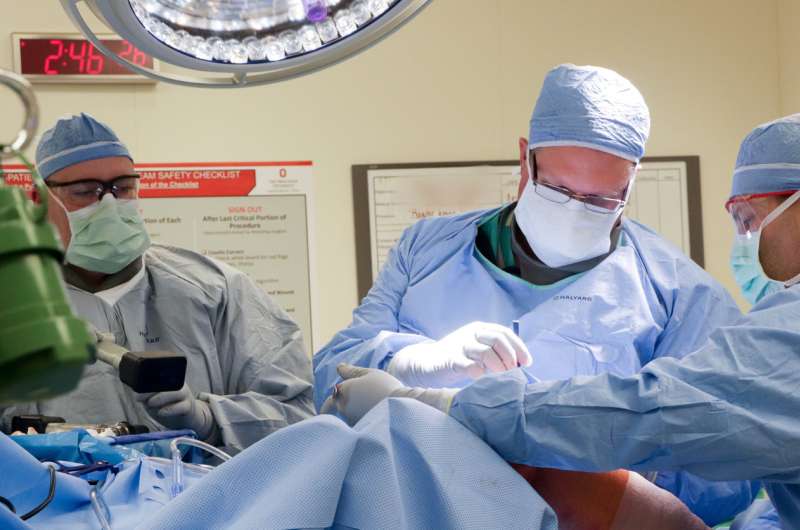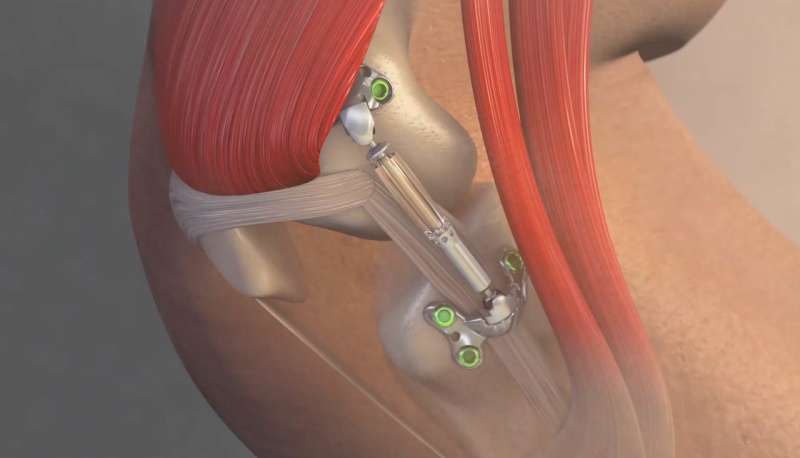OSU Wexner Medical Center first in US to implant device for knee osteoarthritis

Surgeons at The Ohio State University Wexner Medical Center are the first in the U.S. to implant a new device designed to relieve knee pain and help people with osteoarthritis prevent or delay knee replacements.
For the millions who suffer with the daily pain and stiffness of osteoarthritis, treatments to slow the progression of the disease are limited. A clinical trial is testing the Calypso Knee System and the device's ability to extend the functional life of the joint, thus allowing patients to remain active without knee pain.
"This device works like a shock absorber to take pressure off the inside of the knee while creating a cushion similar to what cartilage provides in a healthy joint," said Dr. David Flanigan, orthopedic surgeon at The Ohio State University Wexner Medical Center who performed the surgery. "The hope is that it increases joint functionality, reduces pain and delays a total knee arthroplasty for years or even decades."
Developed by Moximed Inc., the device is designed to treat the symptoms of osteoarthritis on the inner knee, the most commonly affected area. Without altering the anatomy or removing tissues or bone from the knee itself, the implant absorbs excess knee loads that cause pain in osteoarthritic joints.
"We hope this will be an opportunity for patients with osteoarthritis to remain active without pain for a much longer period of time," Flanigan said.
Researchers will study approximately 80 trial participants who receive the implant. Ohio State Wexner Medical Center is one of only four sites in the trial.
If the trial is successful, Flanigan expects the device could soon be available to patients across the country.

Knee osteoarthritis occurs when cartilage in the joint wears away, causing stiffness and pain that continues to get worse with time. Current treatment options, largely for end stage osteoarthritis, often involve invasive surgical procedures that permanently change the knee structure. While effective, removing bone or tissue can limit patients' future treatment options.
More than 700,000 knee replacement surgeries are performed in the U.S. every year, a number that continues to grow. Flanigan said the device could help reverse that trend, helping more people avoid joint replacements and preserve their knees.
"A total knee replacement is truly permanent. You've removed the bone and there's really no going back at that point," Flanigan said. "People are really looking for other options to help them remain active and extend the life of their joint as much as possible before having a knee replacement."


















